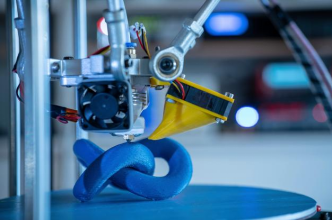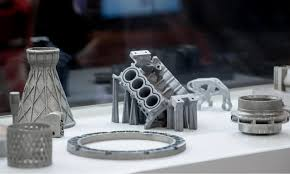Recently, researchers led a team to achieve important breakthroughs in the application of bio-3D printing technology in neural constructs and complex tissue regeneration. The research team cleverly combined the neuro differentiation-promoting effects and neuro protective properties of lithium, calcium, and silicon elements to develop an innovative bioink based on Li-Ca-Si (LCS) bioceramics. By combining this bioink with neural stem cells, a powerful neural construct was successfully constructed using bio-3D printing technology.
This research result not only provides new solutions for nerve regeneration and tissue repair but also expands new directions for the application of bio-3D printing technology in the medical field.

In recent years, 3D printing technology has become one of the mainstream applications. It plays an increasingly important role in medical, aviation, high-end manufacturing, humanoid robots, and other fields.
Currently, 3D printing is gradually showing its economic advantages in mass production. According to Wholers data, the global 3D printing market will reach US$18 billion in 2023, and the industry has maintained a double-digit growth rate for 25 consecutive years. It will bring broad opportunities for the development of related industrial chains.
3D printing industry overview
3D printing, also known as additive manufacturing, is a process that builds objects or parts by stacking materials layer by layer based on three-dimensional model data.
This technology starts from a 3D model and "slices" the model into multiple thin layers, which can be understood as 2D planes. A 3D printer prints and stacks these thin layers layer by layer, ultimately building a complete object by precisely controlling the position and adhesion of each layer of material in three-dimensional space.
Different from the "subtractive manufacturing" method of traditional manufacturing that removes materials to form objects, 3D printing uses a bottom-up layer-by-layer superposition method to simplify complex three-dimensional entities into the superposition of two-dimensional planes, thus reducing the manufacturing cost. Complexity.
Currently, 3D printing has leapfrogged development from prototype manufacturing to direct production of small and large batches of terminal components.

3D printing industry chain review
From the perspective of the industry chain, the upstream of 3D printing mainly includes suppliers of raw materials, core hardware, and auxiliary operating systems. 3D printing materials are an important basis for the development of 3D printing technology. They are closely related to midstream equipment and downstream needs.
Among them, 3D modeling tools cover modeling software, scanners, and data platforms; additive manufacturing raw materials include metals, inorganic non-metals, organic polymers, and biological additive manufacturing materials.
The midstream is mainly the 3D printing equipment link. Equipment manufacturers occupy a dominant position in the whole industry chain, which accounts for 53.2% of the chain. These manufacturers usually also provide printing services and raw material supply.
According to the type of materials used in the equipment, 3D printing equipment can be divided into two categories: metal and non-metal. Metal 3D printing is an important direction of current technological development.
In terms of downstream applications, 3D printing technology is widely used in aerospace, automotive industry, and other fields, mainly in industrial-level applications.

3D printing competition landscape and leading players sorted out
In the field of metal 3D printing, market competition is fierce. The status of globally established companies is relatively stable, while small companies are rapidly rising due to their flexibility.
American companies are outstanding in non-metallic materials, while European companies are more inclined to the field of metallic materials.
China's 3D printing equipment is accelerating the substitution of domestic products. In some areas, such as large-size molding, Chinese companies have even achieved overtake.
Supplier
Kmpass is a high-tech enterprise committed to the research and development, production, processing, sales and technical services of 3D printing materials. The company develops a variety of powder materials and chemicals. Provide OEM service. If you need high quality 3D printing powder, please feel free to contact us.
hot tags: 3d printing,3d printing technology, 3d printer



